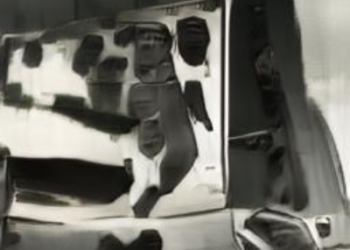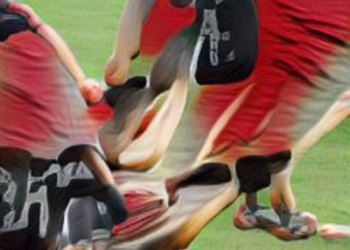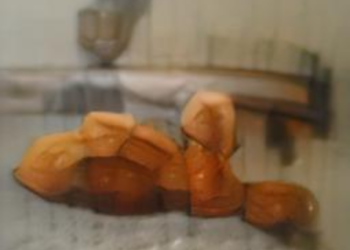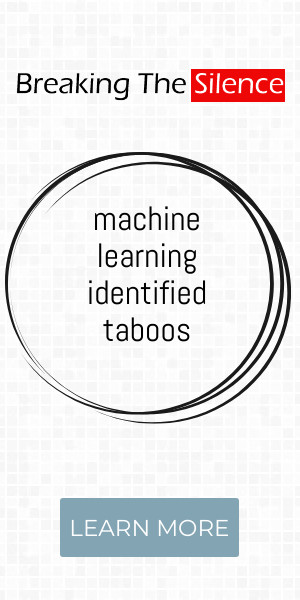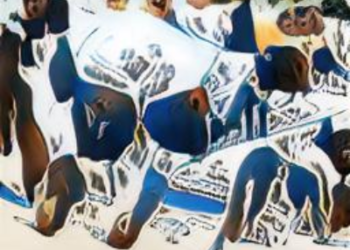Every country has its own list of topics they would rather not talk about, and Ireland is no exception.
Here are our top ten social taboos of Ireland.
There are, however, some things we would rather not talk about, what we call social taboos in Ireland.
Perhaps you are not familiar with some of these or have never noticed them before, but once you read through our top ten social taboos of Ireland list, you will know to choose your topics wisely.
Of course, having a few scoops is common in Ireland.
The Famine – one of the top social taboos in Irish society
Sure, everyone knows about the famine and the mass emigration from Ireland in the 1800s, but there are mixed views on the Great Famine, many of which can be controversial, so we just leave that to the history books.
We tend to stick to our go to ‘lighten the mood’ jokes; we don’t want to offend people now, do we? This is easily one of the top social taboos in Irish society. Another of our top social taboos of Ireland best to be avoided.
Most people are familiar with the Troubles of Ireland, most of which were based around the two religions, Protestants and Catholics .
So there you have it, our list of the top ten social taboos of Ireland.
Eliza Hittman is a filmmaker whose movies tackle taboos with equal amounts of care and confidence.
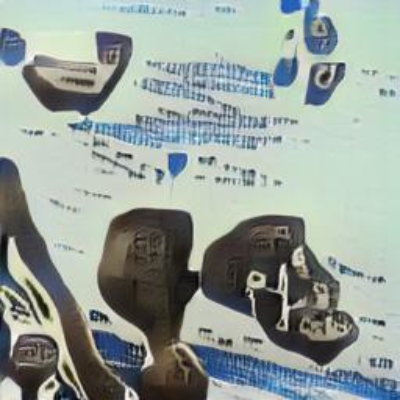
I was reading about the death of Savita Halappanavar in Ireland, a woman who passed away after being denied a lifesaving abortion, and the journey that women would take from Ireland — across the Irish Sea to London and back in one day.
I wrote a treatment for a movie set in Ireland, and then I started thinking about how to transpose the story to the U.S.
Hittman: All of my films explore taboos in different ways. was one that I was interested in — it’s such a sort of private taboo experience.
It is also highly taboo in the staunchly Catholic island nation.
The well-travelled route from Valletta to London for those needing abortions mirrors the journeys of thousands who had to leave Ireland and Northern Ireland to end unwanted pregnancies before liberalisation in those countries.
Charmaine , who travelled to the UK from Malta to end a pregnancy in 2011, describes her country as «like Ireland on steroids» when it comes to abortion – «in terms of how small we are, how tight-knit we are, how difficult it is to to leave the country».
The headline on this article was amended on 15 June 2020 to remove a reference to Ireland, where abortion is now legal, as stated in the article.
In Newgrange, Ireland, there is a 5,000-year-old Neolithic-era monument, carved with mysterious symbols, marking the elaborate tomb of an important ancient man.
These kinds of tombs are found all over Ireland but the one in Newgrange is the most famous and, most think, belonged to a king.
The discovery suggests that those who ruled Ireland thousands of years ago were practitioners of incest, one of human society’s most consistent taboos.
Understanding for whom these tombs were constructed is one step towards understanding the social world of Neolithic Ireland.
The discovery is interesting precisely because it is so taboo.
Where this almost universally agreed-upon taboo is most regularly flaunted, however, is among members of the socio-political elite.
Cassidy argues that something similar was happening among Neolithic Irish elites: It’s «a way that elites can separate themselves — they get to break a taboo, they get to break a social convention that others aren’t allowed to».

Naphtali Lewis further notes that far from being taboo such marriages were celebrated, publicly announced, and in all respects ‘ordinary. ’ There is no ancient commentary on genetic flaws or unsuccessful relationships.
In the rest of the Roman empire these kinds of unions were a social taboo; accusations of incest were levied against outsiders, including early Christians, as a sign of their moral depravity and barbarian nature.
Some of the first farmers to arrive in Ireland erected this monument, called Newgrange, nearly 1000 years before Stonehenge or Egypt’s first pyramids were built.
Across cultures, incest is almost always taboo—except in inbred royal families.
Its genetic traces at Newgrange suggest social hierarchy took hold in Ireland earlier than thought, according to a new study.
The Neolithic settlers who arrived in Ireland around 3700 B.C.E. were the westernmost limit of that expansion.
Hundreds of such passage tomb monuments are found across Ireland.
Comparing NG10’s DNA and that of other Neolithic burials with DNA from people living on the island centuries earlier shows Neolithic farmers arrived in Ireland as part of a mass migration, and soon swamped or eliminated the genetic legacy of earlier hunter-gatherers, says geneticist Daniel Bradley, a co-author also at Trinity College Dublin.
«Matings like that are taboo pretty much universally, with very few exceptions,» she says.
«I believe we’re seeing a similar social dynamic at play among colonists of Neolithic Ireland,» Cassidy says.
«The question is whether this arose in Ireland or whether they were importing existing social structures into the island,» Cassidy says.
She’s written for Autostraddle, Broadly, and Diva, and is currently working on a book on the supernatural women of Ireland for Wolfenhowle Press.
COUNTY MEATH, Ireland – Recent genetic analysis from remains interred at Newgrange, the largest of Ireland’s great passage tombs built over 5000 years ago, shows that one of the few buried there was the product of an incestuous union – something many academics believe indicates the presence of a deified ruling class like the pharaohs of ancient Egypt.
Known as first-degree incest, these kinds of unions are almost universally taboo in human societies.
Exemptions to that taboo almost always involve a ruling class who set themselves so far above the rest of society that the normal human rules don’t apply, with their flouting of those rules serving as a symbol of their elevated status.
«I believe we’re seeing a similar social dynamic at play among colonists of Neolithic Ireland,» said Cassidy.
Given as supporting evidence of this theory are the results from the genetic testing of the other remains found in passage tombs across Ireland.
However, marriages within a wider kin group don’t necessarily indicate the acceptance of first-degree incest, and many cultures that condone marriage between cousins still hold parent-child or sibling unions as taboo.
Based on this alone the conclusion that Neolithic Ireland had an incestuous ruling class with a mystical or even divine bloodline would seem tenuous – however, the structure of Newgrange itself coupled with a piece of local folklore suggests it may be the correct one after all.
All we do know for sure is that a relatively small kin group was buried in the passage tombs across Ireland and that at least one individual, interred in the largest and presumably most high status of those tombs, was the product of first-degree incest.
«The question is whether this arose in Ireland or whether they were importing existing social structures into the island,» Cassidy says.
Every country has their own list of topics they would rather not talk about, and Ireland is no exception, so here is our top 10 social taboos in Irish society.
There are, however, some things we would rather not talk about and some things that make us feel slightly uncomfortable, which is what we call a social taboo in Ireland.
However, once you read through our top 10 social taboos in Irish society list, you will know to choose your topics wisely.
Of course, having a few scoops is common in Ireland. we are the master drinkers but we are also masters at handling our alcohol.
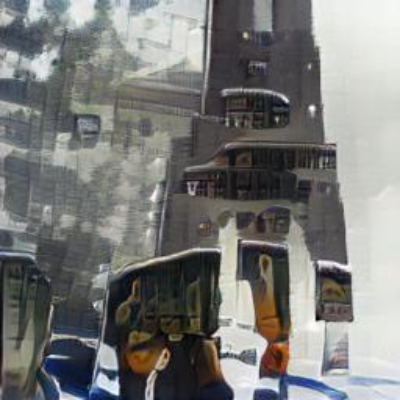
I had raised the question of race and racism in Ireland, and Cork in particular, and was abruptly told that these were all «USA issues» that I should now leave behind.
Even though we long ago divided our worlds between ‘east’ and ‘west’ and ‘north’ and ‘south’, all is not lost: now more than ever before, we are having open debate and discussion right here in Ireland.
Here in Ireland our culture is full of ‘mammy’ stories — from Baz Ashmawy’s ’50 Ways to Kill Your Mammy’ to Brendan O’Carroll’s ‘Mrs Brown’s Boys’ — we are now connecting things we see here with other places.
It is recognition that Ireland has seen a twofold rise in inward migration and that we need to find ways of bridging our divides.
Race is an issue that has been well and truly brought into the spotlight here in Ireland.
Back home in Ireland, Croke Park — named after the Catholic Bishop Thomas William Croke — has announced that it will welcome Muslims to congregate to offer Eid prayers at the end of this month.
«Looking for abortion advice?» «How far along am I?» The bright orange speech bubbles attached to stock images of smiling medical experts purport to inform women about abortion options that became legally available in Ireland on Jan.
In May, Ireland voted decisively to cast aside one of the world’s most restrictive abortion bans, approving a new law that guarantees unrestricted abortion up to the 12th week of pregnancy, and longer in situations in which there is a serious risk to the life or health of a woman, or in which there are fatal fetal abnormalities.
When does «Up the RA» not mean «Up the RA»? When the England footballer, Declan Rice, who played for the Republic of Ireland before switching allegiance, apologised for using the pro-IRA slogan on a recently unearthed social media post he made as a 16-year-old it added to a strange momentum the aesthetics of Irish republicanism are gaining as they are repurposed by a new generation.
For others, it’s subversive and transgressive; playing with a taboo with the safe benefit of distance.
Unfortunately it has also come at a time when there are renewed tensions over the border, and Brexit has reinvigorated the drive for a united Ireland.
Meanwhile, at the St Patrick’s Day parade in New York, Mary Lou McDonald stood cheerfully behind a banner that declared ‘«England get out of Ireland», something her political rivals jumped on, but a sentiment that speaks to Sinn Féin’s base, and quickly, inevitably, became a meme.
The rise of patriotism in Ireland among younger people feels more like claiming and shaping a contemporary Irish identity rather than sectarian.
This irony, plus that storied Irish history of satire, absurdism and surrealism, matched with the edginess of joking about something that was once taboo, filtered through meme culture, has combined to create this current moment in Irish popular culture.
United Kingdom, London – 04-11-2019 — From Coffin Ships To Crowdfunding – Ending The Great Hunger Taboo The Great Hunger Movie – Famine in Times of Plenty A crowdfunding project is launched today to fund the first feature length movie to tell the whole story of the Irish Famine, including the role of the English Prime Minister, Lord John Russell and his infamous henchman Trevelyan.
«It is a grave injustice that no feature film has ever told the whole story of the greatest humanitarian tragedy of 19th century Europe. With the help of the worldwide Irish diaspora, we are going to use crowdfunding to break this taboo. We are going to break through the censorship and make the movie the establishment doesn’t want made» says Tim Pat Coogan, associate producer for the movie and Ireland’s most famous historian.
The Great Hunger Movie is an action drama set in Ireland in the 1840’s.
The text of this article was generated by the Breaking The Silence system that collected 11 news articles posted on the web from January 2019 to September 2020 and clustered for the taboo subjects related to Ireland







































































